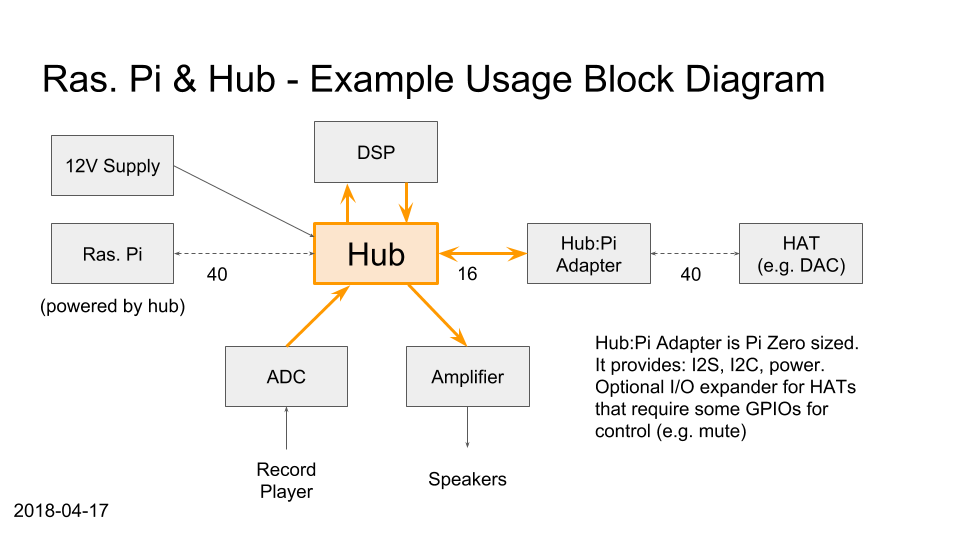So I realised it would probably be a good marketing / UX decision to make my hub as easy as possible to use with a Raspberry Pi.
To that end, I'm going to make the Hub essentially a "HAT". The shape & size may not be suitable, but I can easily make it pin compatible, so people can just plug in a 40-pin ribbon cable. The hub will have a 12V power supply and 5V regulator to provide power to the Raspberry.
Now the Pi also has a great variety of DACs, amplifiers, etc available, so I'll make a Hub:Pi adapter to plug these in. Hub connections, for now, are going to be 16 pin (8x2) headers as per FreeDSP. This Hub:Pi adapter will be Pi Zero sized, and carry power (5v & 3v3), I2S audio, I2C for control, and will optionally have an I/O expander for HATs that need some GPIO pins (unless I discover an overwhelmingly standard pin used for mute, these will be unrouted, user to connect jumper wires).
I'll try to get some rough PCB renders together soon so this is easier to visualize. For now, here's a block diagram.

 Andrew Bolin
Andrew Bolin
Discussions
Become a Hackaday.io Member
Create an account to leave a comment. Already have an account? Log In.